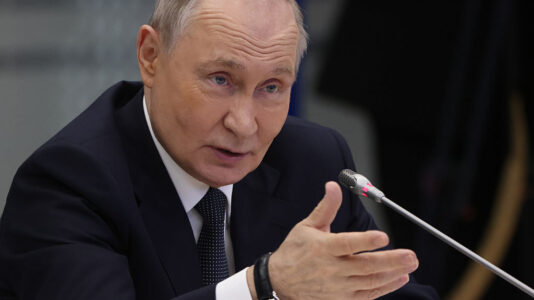Russian forces are making further advances in the Lyman area to lay the foundation for the complete capture of Borova, Lyman, and Luhansk Oblast in the coming months.
The Russian military is further expanding its bridgehead northeast of Lyman in order to prepare for the capture of Borova and Lyman in a coordinated operation. According to footage published on March 28 and geolocated on April 1, Russian troops have recently advanced northwest of Novolubivka. The consolidation of forces may indicate that the Russians are preparing for a major offensive, according to a report by the American geopolitical research institute ISW.
Within the last 24 hours, further advances in the area have been reported as well.
The Russians have strengthened their presence southeast of Nove, while on March 31, Ukrainian military observer Kostyantyn Masovets reported that Russian units had reached the southern edge of Katerynivka.
The Russians crossed the western bank of the Zherebets River in January 2025 and have been gradually expanding their bridgehead there over the past three months. The operation is intended to enable them to launch further offensives from the stabilized bridgehead.
The attacks are being driven almost exclusively by infantry forces, in significant numbers. A spokesman for a Ukrainian brigade serving in the Lyman area stated on March 31 that since January 2025, the Russians have been conducting almost exclusively infantry attacks, with armored vehicles rarely deployed. According to ISW, there have been no significant Russian mechanized attacks in the area this year.
According to the Ukrainian Hortiția Force Group, Russian infantry attacks have intensified since late March, and most of the Russian soldiers serving in the area are well-trained. Another Ukrainian brigade reported on March 24 that in some sectors, the Russian superiority may be up to tenfold.
The 3rd and 144th Russian mechanized rifle brigades fighting on the front are constantly being replenished, although these units have been in the area since at least 2023, without any rest or reorganization.
The new bridgehead could play a key role in capturing Borova or Lyman. So far, the Russians have been advancing from Ivanivka towards Kolodjazi, but recently they have been concentrating their forces northwest of Ivanivka, towards Nove and Katerynivka, towards Borova. According to a Russian military blogger, the Russian army is trying to connect its bridgehead near Novolyubivka with another, smaller bridgehead near Makiivka, located about eight kilometers away.
The goal may be to create a stable salient that will allow it to support attacks southeast of Borova. In January, they advanced northeast of Borova, but since then they have achieved less success to the east and southeast. Now, they are trying to weaken the Ukrainian defense line between Novoserhiyivka, Druzhelyubyvka and Novy Mir with another salient, so that they can bypass it and capture the eastern part of Borova.
A bridgehead near Ivanivka, on the west bank of the Zherebets River, may also play a role in the capture of Lyman. The Russian army may attempt to advance towards Karlivka from Nové, and from Kolodzia to Drobisheve, to establish defensible positions on the Karlivka–Sandriholove–Drobysheve line on the east bank of the Nitriusz River.
This advance could provide an opportunity to attack Ukrainian positions north of Lyman. At the same time, Russian attacks from the east could also intensify in Torsk, which could put further pressure on Ukrainian defense lines.
These advances are part of a long-term Russian strategy to push Ukrainian forces from the east bank of the Oskil River and then advance further west into Kharkiv Oblast and northern Donetsk Oblast.
Russian forces may also attempt to capture the one percent of Luhansk Oblast that is still under Ukrainian control through the new bridgehead. This area is about 266 square kilometers, which the Russian army has been fighting to acquire since November 2024. The full capture of Luhansk was announced once, on July 3, 2022, but the Ukrainian counteroffensive pushed the Russians back beyond the administrative border in the fall.
The Kremlin has long set the goal of capturing Donetsk and Luhansk regions, and has demanded that the international community recognize their annexation, as well as Zaporizhia and Kherson regions. Despite all this, none of the occupied regions is fully under Russian control. The Kremlin would likely use the recapture of Luhansk for domestic political purposes, thus justifying the human costs of the war in Ukraine and the prolonged war effort.






